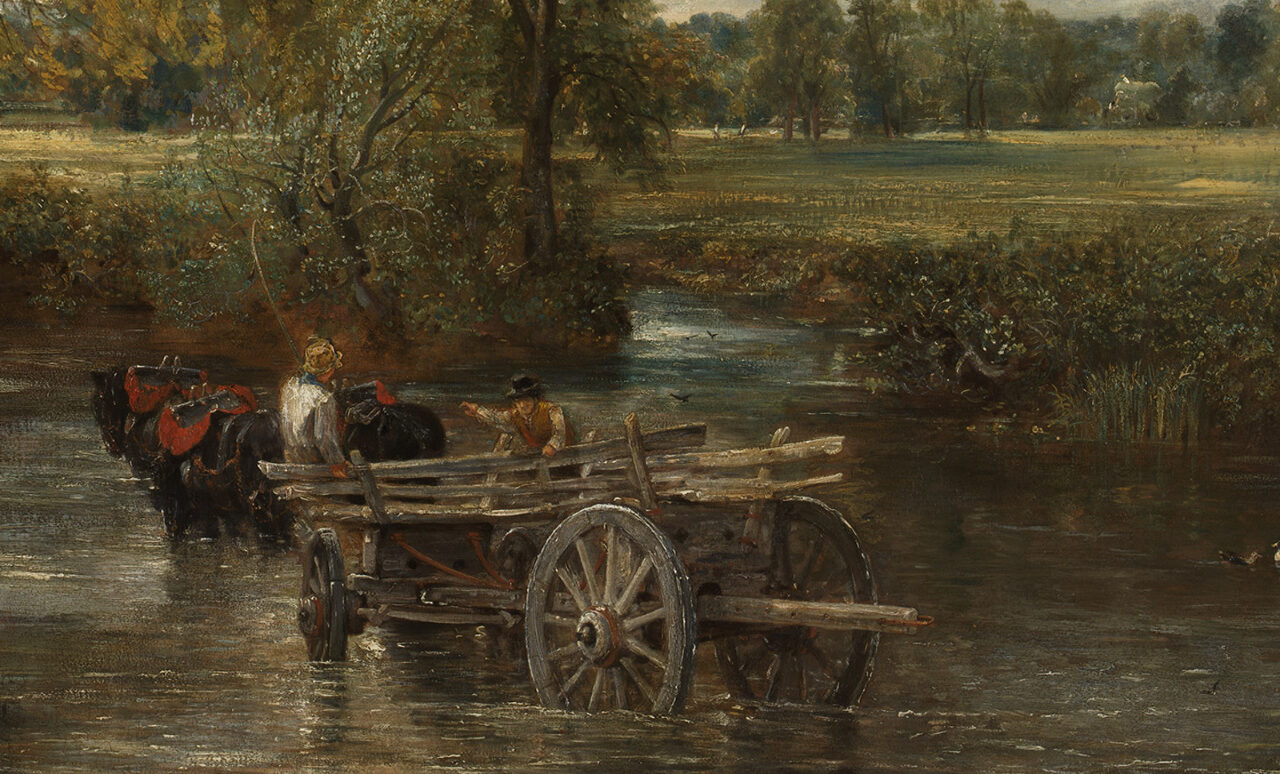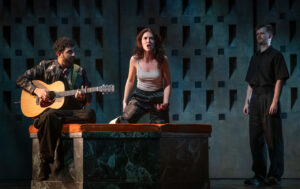Discover Constable and the Hay Wain at the National Gallery

There can be few artists from these shores as profoundly associated with a single county as John Constable is with Suffolk. That most iconic of all English landscapes, The Hay Wain, painted in 1821 provides the stimulus for the National Gallery’s new exhibition. After failing to find a buyer at the Royal Academy, Constable’s great masterpiece received considerably better praise at the Paris Salon of 1824 to the extent that the artist was awarded a gold medal by King Charles X of France. Founded in that same year, the National Gallery has decided that this is an ideal time to evaluate the painting’s – and indeed painter’s – rise to prominence together with the societal background of Constable’s time.
Right from the outset here, emphasis is laid on the enduring effect of the bucolic world the English artist conjured up in this image. Depicting the River Stour dividing Suffolk and Essex, The Hay Wain tends to provoke feelings of nostalgia for a rural landscape unscathed by pollution. Before encountering the instantly recognisable canvas, the visitor is presented with images showing how other artists have responded to the work. Peter Kennard’s poster from 1980 holds Cold War menace as he transposes the Haywain, filling it with cruise missiles in reference to US warhead deployment at Greenham Common. Another, distinctly more chocolate-boxy reconfiguring of the painting sees it rendered as a tourist poster from an earlier decade of the 20th century.
One finds Constable’s compatriots of an older generation like George Stubbs – he of horse painting fame – and Thomas Gainsbrough providing incontrovertible evidence that landscape painting was ably pursued in England well before the Suffolk native and his rival Turner arrived on the scene. The debt owed to Dutch Golden Age landscape painters becomes apparent. Constable is known to have said that Gainsborough came to his mind whenever he painted a bush. Curators are also at pains to throw into sharp relief the rural work of contemporaries such as the talented Richard Parkes Bonington and the now less well-known but popular in his day George Morland.
There’s a particular narrative being conveyed of the deep inequalities at the heart of Georgian society. Unflinching satirical work by James Gillray and Thomas Rowlandson and others capture a poverty-stricken peasantry either being mocked for their alleged lack of amorous restraint or devastated by the effects of the Corn Laws. One direct image centres on four figures that sum up Britain’s social extremes: the king, a bishop, a red-coated soldier and peasant farmer, the latter of whom is stated to pay for everything.
At the press opening, the exhibition’s curator, Christine Riding mentioned that Constable was the son of a wealthy mill owner, a firmly middle-class background that contrasted starkly with his contemporaries William Turner and William Blake. Both feature here, Turner in the form of a watercolour Essex landscape (it was commonplace for even major artists to supplement their income with landscape commissions) and Blake in the form of a mystically spiritual landscape. It’s interesting and perhaps pertinent to see Constable creating images of cottages in perfect condition without signs of wear and tear one would expect from poor farming communities. His Cottage in a Cornfield (1817) is neat and tidy compared to George Morland’s ramshackle rustic dwelling in Coming Storm, Isle of Wight (1789).
Constable himself emerges as an artist of radical vision for his time. Close inspection of The Hay Wain reveals his loose handling of the brush in the rendering of tree leaves. One can only imagine how incredibly original the sweeping way in which he applies the colourific reflections on the River Stour would have seemed at the time. Exhibition organisers put forward the argument that for all of the artist’s reputation as a truthful and mimetic capturer of nature – some of his celebrated studies of cloud formations can be found here – Constable’s paintings were his own creative compositions. He uses vibrant red, for example, on the three horses to contrast with the array of greens in The Hay Wain.
The artist’s sheer thoroughness in shaping his craft comes to the core. Incredibly, Constable sketched the scene for 20 years before completing the final version in his London studio. He is seen producing multiple studies for The Hay Wain alone in varying dimensions. A full-size preparatory painting, never intended to be sold, shows the Suffolk man mapping out and readjusting the composition – carrying a lively energy all of its own. He is seen to be working out the distribution of light and colour across the work. Displayed nearby is Constable’s celebrated painting of Salisbury Cathedral from 1831, a glowing edifice before a blue sky the clouds of which threaten to engulf the building in rain, all framed in the foreground by trees. The bishop of Salisbury, Dr John Fisher was a personal friend and important patron of the artist, a devout Anglican. As a pioneering exponent of Naturalism, Constable would inspire the plein-air Barbizon school in France, including Millet and Rousseau.
Shedding light on the changing state of the English landscape in the early 19th century and its representation by artists of the period, in particular Constable, this exhibition proves consistently engaging. It is intriguing to consider the artistic and societal context surrounding the development of this most quintessential British landscape painter’s career. There is also something rather thrilling about seeing the actual gold medal presented to the artist by the King of France 200 years ago this year, a hard-won accolade surely savoured.
James White
Image: Courtesy of the National Gallery
Discover Constable and the Hay Wain is at from 17th October 2024 until 2nd February 2025. For further information or to book visit the exhibition’s website here.

























Facebook
Twitter
Instagram
YouTube
RSS